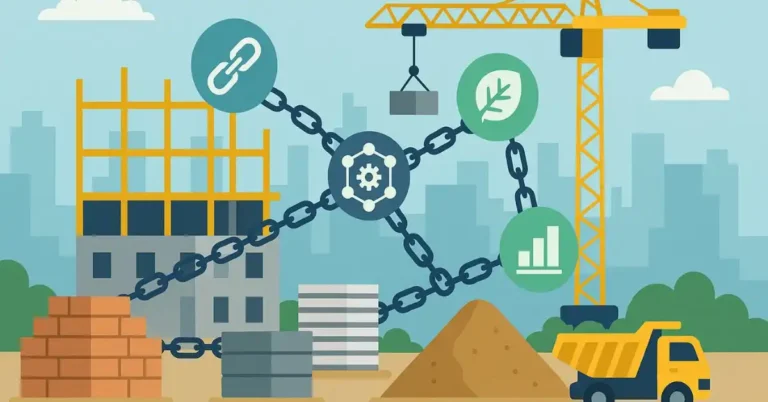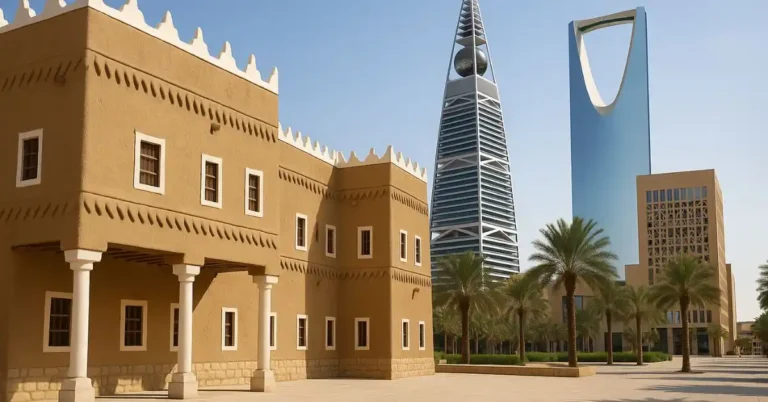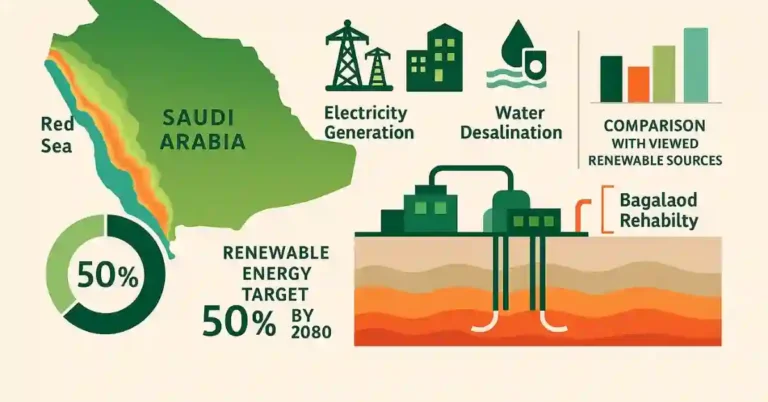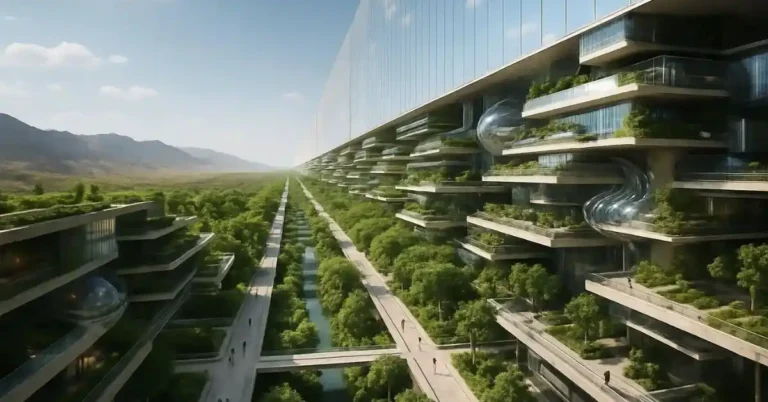Comparing LEED and Mostadam certification
LEED and Mostadam represent two pivotal green building frameworks shaping the sustainable construction movement. As climate change and resource scarcity challenge the global built environment responsible for major energy use and emissions these rating systems provide actionable solutions, transforming how buildings are designed, built, and operated.
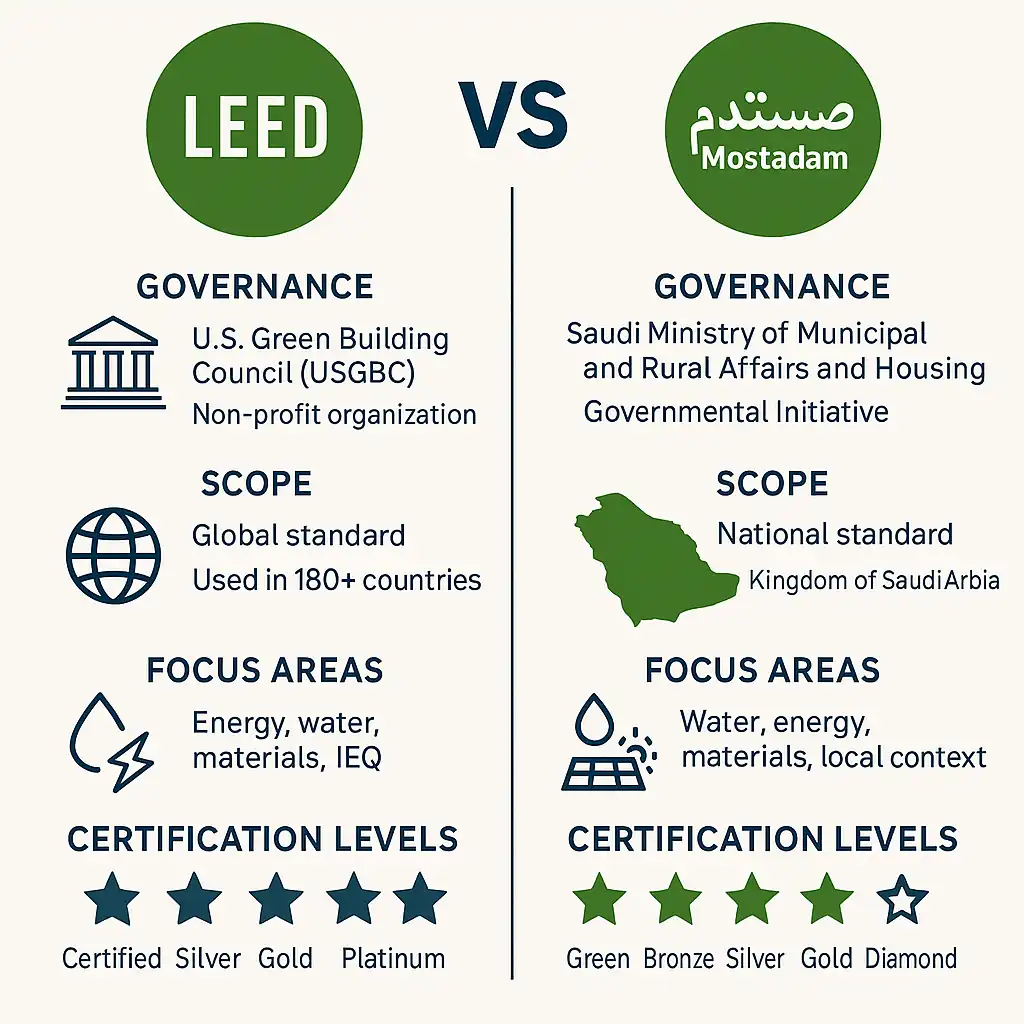
Among the most recognized and widely adopted frameworks globally is LEED, which stands for Leadership in Energy and Environmental Design. Developed and administered by the non-profit U.S. Green Building Council (USGBC), LEED emerged in the late 1990s and has since become a global benchmark for green building excellence.
Its comprehensive, points-based system evaluates buildings across multiple categories, offering different certification levels (Certified, Silver, Gold, Platinum) based on the number of credits achieved. LEED’s influence extends far beyond the United States, with certified projects spanning over 180 countries, making it a powerful force in shaping international sustainable building practices and market expectations.
Its adaptability through various rating systems tailored for different building types (like new construction, existing buildings, interiors, homes, and even entire neighborhoods and cities) has contributed significantly to its widespread adoption.
While LEED provides a global standard, the unique environmental, climatic, and cultural contexts of specific regions often necessitate tailored approaches. Recognizing this, the Kingdom of Saudi Arabia (KSA) developed Mostadam, its national green building rating system.
The Rise of Green Building Standards
Green building represents a holistic approach to design, construction, and operation, aiming to minimize environmental impact while simultaneously enhancing occupant health, well-being, and community resilience.
This paradigm shift is driven not only by environmental concerns but also by economic factors, including rising energy costs, increasing regulatory pressures, and growing market demand for healthier, more efficient spaces. Sustainable construction practices encompass a wide array of strategies, from optimizing energy and water efficiency to selecting sustainable materials, managing construction waste responsibly, and improving indoor environmental quality. The ultimate goal is to create structures that are environmentally responsible and resource-efficient throughout their entire life cycle, from siting and design to construction, operation, maintenance, renovation, and deconstruction.
Navigating the complexities of sustainable design and verifying genuine environmental performance requires standardized frameworks and benchmarks. This need has led to the development and proliferation of green building rating systems worldwide.
These systems provide structured methodologies, criteria, and metrics to assess the environmental attributes and sustainability performance of buildings. They serve multiple crucial functions: guiding design teams towards best practices, offering a credible third-party verification of sustainability claims, providing market differentiation for high-performing buildings, and driving innovation within the construction industry.
By establishing clear goals and quantifiable targets across various environmental categories such as energy, water, materials, site selection, and indoor air quality these rating systems translate abstract sustainability goals into actionable strategies and measurable outcomes, fostering transparency and accountability in the pursuit of greener buildings.
Launched as part of the ambitious Saudi Vision 2030 initiative, which aims to diversify the economy and improve quality of life, Mostadam is specifically designed to address the Kingdom’s unique challenges and opportunities.
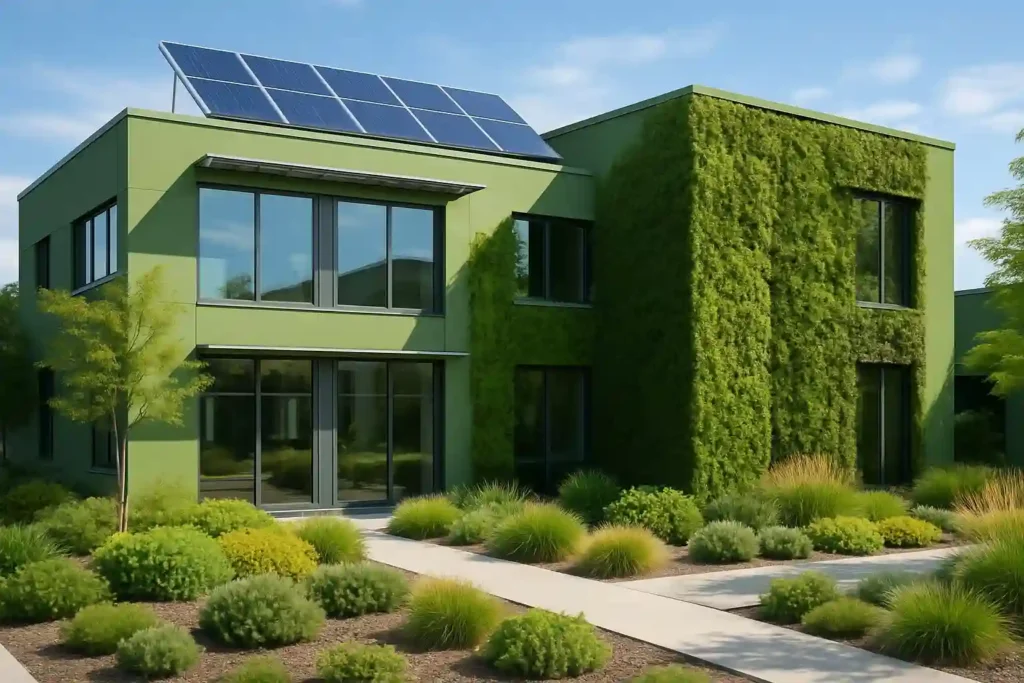
Administered by Sustainable Building, under the Ministry of Municipal and Rural Affairs and Housing, Mostadam places particular emphasis on criteria critical to the Saudi context, such as water conservation in an arid climate, energy efficiency considering high cooling demands, and the promotion of local materials and economic development.
It represents a strategic effort to embed sustainability principles within the rapidly growing Saudi construction sector, aligning development with national environmental goals and cultural values. As the global push for sustainability intersects with regional priorities, stakeholders in the construction industry developers, architects, engineers, investors, and policymakers often face choices between different certification systems.
Understanding the nuances, strengths, and specific focuses of prominent systems like LEED and Mostadam is crucial for informed decision-making. This article aims to provide a comprehensive comparison of these two influential green building rating systems.
We will delve into their respective governance structures, geographic scopes, technical criteria, certification processes, costs, and market implications. By examining their similarities and differences head-to-head, this comparison seeks to equip readers with the knowledge needed to navigate the green building landscape and select the certification framework best suited to their project goals, particularly for developments within Saudi Arabia or those considering international standards versus regional alignment.
The objective is to clarify how each system contributes to the broader goals of sustainable construction while catering to distinct market needs and environmental contexts.
Understanding LEED: The Global Benchmark
Leadership in Energy and Environmental Design, universally known as LEED, stands as arguably the most influential and widely adopted green building rating system on the global stage. Developed and continuously refined by the U.S.
Green Building Council (USGBC), a private non-profit organization established in 1993, LEED provides a comprehensive framework for designing, constructing, operating, and maintaining buildings that prioritize environmental stewardship and human well-being.
Its inception aimed to transform the building market by defining through a common standard of measurement, promoting integrated, whole-building design practices, and recognizing environmental leadership within the industry.
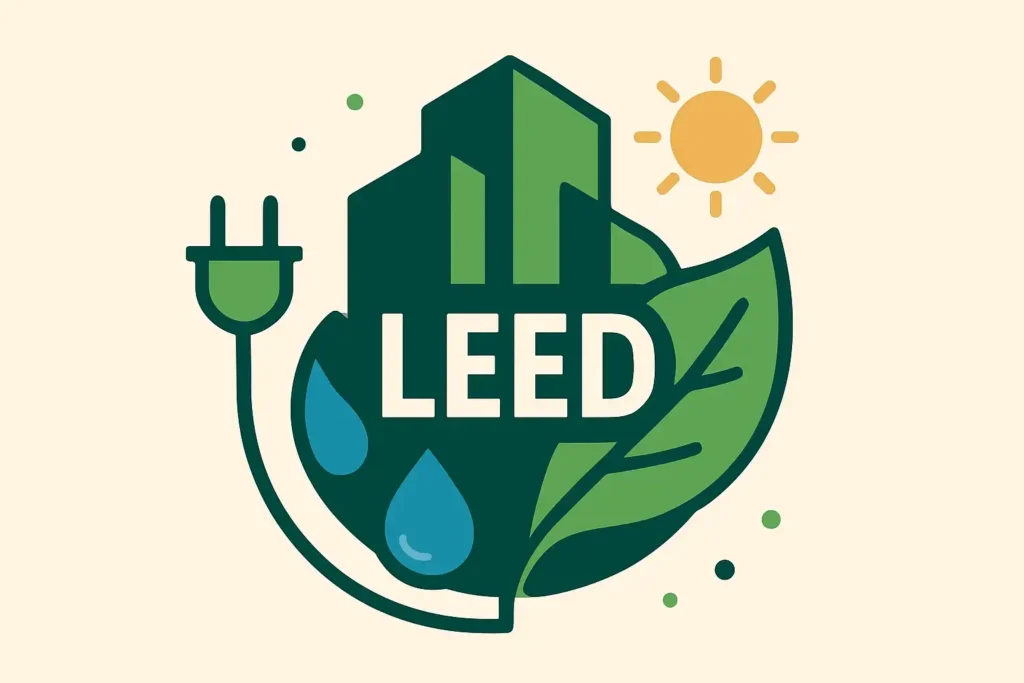
Since its initial launch, LEED has undergone several iterations, evolving from LEED v1.0 to the widely used LEED v4 and v4.1, with LEED v5 currently under development, reflecting advancements in building science, technology, and sustainability priorities like decarbonization, equity, and resilience.
The core mission of LEED revolves around achieving holistic sustainability performance across key areas. Its goals are multifaceted, aiming to reduce the environmental footprint of buildings, particularly concerning energy consumption, water usage, waste generation, and carbon emissions.
Simultaneously, LEED places significant emphasis on enhancing human health and productivity by promoting superior indoor environmental quality (IEQ), including better air quality, access to daylight, and the use of non-toxic materials.
Resource efficiency is another cornerstone, encouraging the responsible sourcing of materials, waste reduction during construction and operation, and the protection of ecosystems and biodiversity through thoughtful site selection and management.
This comprehensive approach ensures that LEED-certified buildings deliver benefits across environmental, economic, and social dimensions. The global impact of LEED is undeniable. What started as a U.S.-centric initiative has expanded dramatically, becoming a recognized symbol of sustainability achievement worldwide.
As of recent data, LEED projects can be found in over 186 countries and territories, encompassing billions of square feet of certified space. This extensive adoption underscores its role as an international benchmark, influencing building codes, market preferences, and corporate sustainability strategies across diverse geographical and economic contexts.
The sheer volume of registered and certified projects highlights its significance not just as a rating system, but as a catalyst for market transformation towards more sustainable practices on a global scale. To cater to the diverse nature of the built environment, LEED offers a suite of specific rating systems tailored to different building types and project scopes.
The main categories include: LEED for Building Design and Construction (BD+C), applicable to new construction and major renovations; LEED for Interior Design and Construction (ID+C), focusing on commercial interior fit-outs; LEED for Building Operations and Maintenance (O+M), designed for existing buildings undergoing improvement work or seeking certification for operational sustainability; LEED for Homes, which addresses single-family and multi-family residential buildings;
LEED for Neighborhood Development (ND), evaluating projects at the scale of entire neighborhoods, incorporating principles of smart growth and urbanism; and LEED for Cities and Communities, extending the framework to assess sustainability at an urban scale.
This flexibility allows projects of varying types and sizes to pursue LEED certification, applying relevant sustainability strategies within their specific context.
Understanding Mostadam: Saudi Arabia’s Sustainable Vision
Mostadam, meaning “Sustainable” in Arabic, is Saudi Arabia’s national green building rating system, developed by the Ministry of Municipal and Rural Affairs and Housing under the Vision 2030 framework. Unlike LEED’s international approach, Mostadam is tailored specifically to the Kingdom’s environmental, economic, and cultural context.
It focuses on priorities like reducing water consumption, optimizing energy efficiency for extreme heat, encouraging greywater reuse, and promoting local materials and job creation. Designed to align with the Saudi Building Code (SBC), Mostadam addresses the region’s challenges such as water scarcity and high cooling loads more directly than global standards.

It provides separate systems for residential, commercial, and community developments, and plays a central role in guiding Saudi Arabia’s sustainable construction efforts in line with national regulations and goals.
Within the Residential and Commercial systems, there are separate manuals and requirements for the Design + Construction (D+C) phase and the Operation + Existing (O+E) phase, allowing both new builds and existing structures to pursue certification based on their relevant stage. This structure provides a clear pathway for implementing and verifying sustainable practices throughout the development and operational lifespan of buildings within KSA.
Head-to-Head Comparison: LEED AND Mostadam
Having established a foundational understanding of both LEED and Mostadam individually, we can now delve into a direct comparison across several critical dimensions. This head-to-head analysis will illuminate the key distinctions and similarities, helping stakeholders appreciate the unique value proposition of each system, particularly within the context of development in Saudi Arabia.
1. Governance and Development
A fundamental difference lies in the entities governing and developing these systems. LEED is the product of the U.S. Green Building Council (USGBC), a private, non-profit, member-driven organization. This structure fosters a global perspective, drawing input from a diverse international membership base of industry professionals, corporations, and environmental groups.
Updates to the LEED standard typically involve extensive public comment periods and consensus-building processes, aiming for broad applicability and market acceptance worldwide. Its independence from any single government allows it to function as a globally recognized, third-party standard.
Mostadam, conversely, is a governmental initiative, developed and administered by Sustainable Building under the authority of Saudi Arabia\’s Ministry of Municipal and Rural Affairs and Housing. This direct government backing firmly anchors Mostadam within the national policy framework, particularly Saudi Vision 2030 and the Saudi Building Code (SBC).
Its development is driven by national priorities, focusing specifically on KSA\’s environmental challenges, economic goals, and regulatory landscape. Updates and modifications are likely managed through governmental processes, ensuring alignment with national strategies but potentially offering less direct global industry input compared to LEED’s model. This difference in governance influences the systems’ focus, evolution, and integration with regulatory mandates.
2. Geographic Scope and Applicability
The intended geographic scope represents another major divergence. LEED is explicitly designed as an international standard, utilized in over 186 countries. Its frameworks and credits, while originating in the U.S., are intended for global application, often incorporating regional priority credits and alternative compliance paths (ACPs) to offer some degree of local adaptation.
Its widespread recognition makes it a familiar benchmark for international investors, multinational corporations, and projects aiming for global visibility. Mostadam’s scope is intentionally national, designed by Saudi Arabia, for Saudi Arabia. Its criteria, benchmarks, and requirements are calibrated specifically for the Kingdom’s unique climate (arid, high temperatures), resource availability (water scarcity), construction practices, and cultural context.
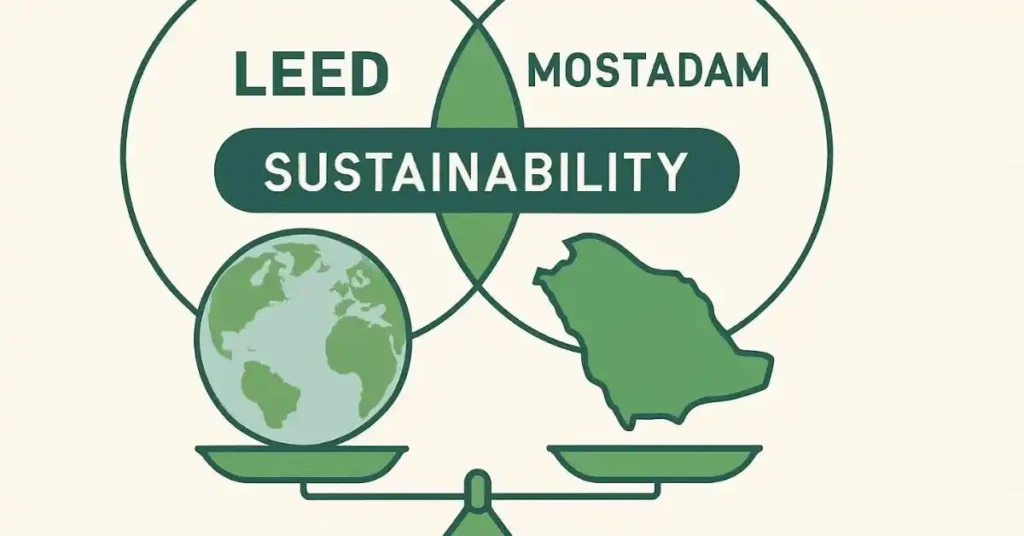
While it draws on international best practices, its primary applicability is within KSA borders. For projects located within Saudi Arabia, Mostadam offers a highly relevant and contextually appropriate framework, directly aligning with local conditions and regulations in a way a global standard might not inherently achieve without significant adaptation.
The choice between them often hinges on whether the project seeks primarily local relevance and regulatory alignment (favoring Mostadam in KSA) or international recognition (potentially favoring LEED).
3. Rating System Structures and Categories
Both LEED and Mostadam employ points-based systems where projects earn credits across various sustainability categories to achieve different certification levels. However, their specific structures and category weightings differ, reflecting their distinct priorities.
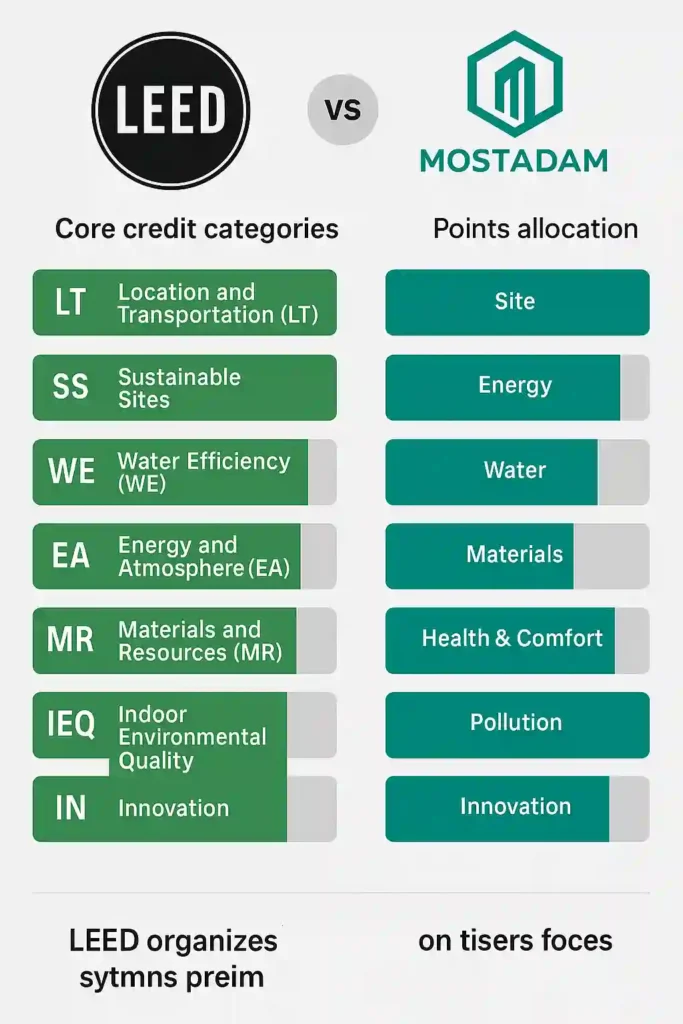
LEED offers a broad array of rating systems (BD+C, ID+C, O+M, Homes, ND, Cities) covering nearly every conceivable project type. Its core credit categories typically include Location and Transportation (LT), Sustainable Sites (SS), Water Efficiency (WE), Energy and Atmosphere (EA), Materials and Resources (MR), Indoor Environmental Quality (IEQ), Innovation (IN), and Regional Priority (RP).
Mostadam organizes its systems primarily into Residential, Commercial, and Communities, each with Design + Construction (D+C) and Operation + Existing (O+E) manuals. While covering similar thematic areas as LEED (e.g., Energy, Water, Materials, Site, Health & Comfort, Pollution), the specific credits and their weighting within Mostadam are tailored for KSA.
Notably, Mostadam often places a greater emphasis on water efficiency due to extreme scarcity in the region, potentially allocating a higher percentage of total points to water-related credits compared to a typical LEED scorecard. Similarly, energy credits might focus heavily on cooling efficiency.
The structure is designed to directly address KSA’s most critical environmental pressures and align with the Saudi Building Code requirements.
4. Climate and Contextual Adaptation
This aspect highlights Mostadam\’s core strength within KSA. It was fundamentally designed for the Saudi climate and context. Requirements related to thermal comfort, building envelope performance, landscape irrigation, and water reuse are inherently calibrated for arid, high-temperature conditions.
It directly references local codes and standards, simplifying compliance pathways for projects within the Kingdom. LEED, being a global system, addresses regional variation through mechanisms like Regional Priority credits, which offer bonus points for addressing geographically specific environmental issues, and Alternative Compliance Paths (ACPs), which allow projects to meet credit intent using strategies better suited to their local context.
While these mechanisms provide flexibility, achieving deep contextual adaptation within LEED might require more effort from the project team compared to using Mostadam, where local relevance is embedded from the outset. For instance, water efficiency strategies deemed innovative or exemplary in temperate climates might be baseline expectations within Mostadam’s framework for KSA.
5. Certification Levels and Process
Both systems use a tiered approach to recognize varying levels of achievement. LEED awards points across its credit categories, leading to four levels: Certified (40-49 points), Silver (50-59 points), Gold (60-79 points), and Platinum (80+ points). The process typically involves registration, documentation submission (design and construction phases), review by Green Business Certification Inc. (GBCI), and final certification.
Mostadam also uses a points-based system but features five certification levels: Green (Points vary by system, typically the entry-level), Bronze, Silver, Gold, and Diamond (highest level). The process, administered by Sustainable Building, similarly involves registration, assessment by accredited Mostadam Assessors, documentation submission, review, and the awarding of the certificate.
While the overall process flow (register-document-review-certify) is conceptually similar, the specific documentation requirements, review timelines, and the roles of assessors might differ. Mostadam’s levels, particularly the addition of ‘Bronze’ and ‘Diamond’ offer a slightly different granularity in recognizing performance compared to LEED’s four tiers.
6. Costs, ROI, and Market Perception
Certification involves costs beyond implementing the green features themselves. Both LEED and Mostadam have fees associated with registration and review, which can vary based on project size and rating system. Consultancy fees for LEED Accredited Professionals (APs) or Mostadam Assessors are also common.
Direct fee comparisons can be complex and subject to change, but project teams should budget for these administrative aspects. Some analyses suggest Mostadam\’s fees might be structured to encourage adoption within KSA, but this requires verification based on current fee schedules.
The Return on Investment (ROI) for both certifications stems from similar sources: reduced operational costs (energy and water savings), enhanced asset value, improved occupant productivity and well-being, and market differentiation.
In the KSA market, Mostadam certification may carry increasing weight due to its government backing and potential links to regulations or incentives. LEED, however, retains strong international recognition, which might be more valuable for attracting international tenants or investors.
Market perception is key: LEED signifies adherence to a global standard, while Mostadam demonstrates commitment to national sustainability goals and context-specific best practices within Saudi Arabia.
7. Integration with Local Regulations
This is perhaps one of the most significant practical differences for projects in KSA. LEED operates primarily as a voluntary, market-driven standard globally. While it often influences or aligns with local codes, it is typically not mandated by law (though some jurisdictions might incentivize or require it for certain public or large private projects).
Mostadam, being a government initiative, is designed to integrate closely with the Saudi Building Code (SBC), particularly SBC 1001 – Green Buildings. There is potential for certain Mostadam requirements or certification levels to become mandatory for specific project types or locations within KSA as regulations evolve.
This direct linkage means pursuing Mostadam can simultaneously help ensure compliance with national green building regulations, streamlining the approval process. Projects opting only for LEED in KSA would still need to ensure separate compliance with all mandatory SBC requirements, including SBC 1001.
LEED vs. Mostadam: Comparative Facts Table
This table summarizes the key differences between the LEED and Mostadam green building rating systems based on the information gathered from authoritative sources, including the USGBC, Sustainable Building KSA, and comparative academic research.
| Feature | LEED (Leadership in Energy and Environmental Design) | Mostadam (Sustainable Building – KSA) |
|---|---|---|
| Governance | U.S. Green Building Council (USGBC) – Private Non-Profit | Saudi Ministry of Municipal and Rural Affairs and Housing / Sustainable Building – Governmental Initiative |
| Geographic Scope | Global / International (Used in 180+ countries) | National (Kingdom of Saudi Arabia – KSA) |
| Primary Focus | Global best practices, market transformation | KSA national sustainability goals, Vision 2030 alignment, local context |
| Climate Adaptation | Global baseline with Regional Priority credits & ACPs | Inherently designed for KSA\\’s arid climate (water scarcity, high heat) |
| Key Rating Systems | BD+C, ID+C, O+M, Homes, ND, Cities & Communities | Residential (D+C, O+E), Commercial (D+C, O+E), Communities |
| Core Categories | Location & Transportation, Sustainable Sites, Water Efficiency, Energy & Atmosphere, Materials & Resources, Indoor Environmental Quality, Innovation, Regional Priority | Site, Energy, Water, Health & Comfort, Materials & Waste, Innovation & Added Value, Pollution, Management (Categories may vary slightly by specific system) |
| Emphasis Example | Broad environmental impact, energy efficiency | Strong emphasis on Water Efficiency, Energy (cooling), Local Economy |
| Certification Levels | 4 Levels: Certified (40-49 pts), Silver (50-59 pts), Gold (60-79 pts), Platinum (80+ pts) | 5 Levels: Green, Bronze, Silver, Gold, Diamond (Point thresholds vary by system) |
| Regulatory Integration | Primarily voluntary market standard | Closely integrated with Saudi Building Code (SBC 1001 – Green Buildings), potentially mandatory aspects |
| Market Recognition | High international recognition | Strong national recognition within KSA, government backing |
| Administering Body | Green Business Certification Inc. (GBCI) | Sustainable Building (KSA) / Accredited Mostadam Assessors |
Note: Points thresholds and specific category weights can vary between different versions and specific rating systems within both LEED and Mostadam. This table provides a general comparative overview.
Data Insights: Performance and Adoption
Quantifying the impact and uptake of green building certifications provides valuable context for their comparison. While precise, globally aggregated, and directly comparable real-time data for both LEED and Mostadam can be challenging to consolidate due to varying reporting cadences and methodologies, available statistics and case studies offer significant insights into their respective performance benchmarks and market penetration.
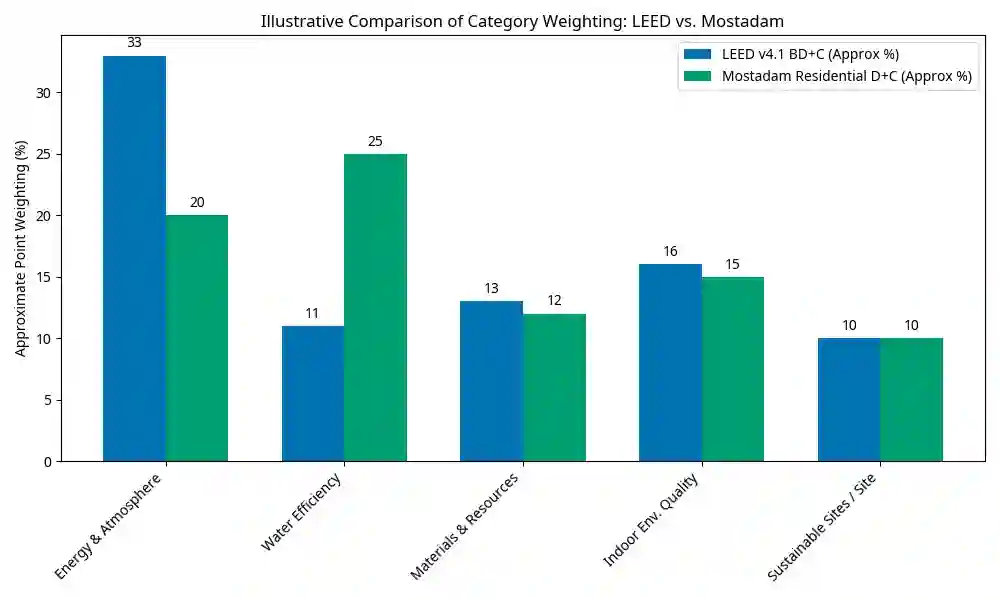
LEED, benefiting from its longer history and global reach, boasts extensive publicly available data through the USGBC and GBCI websites. Statistics often highlight significant average energy savings (typically 25-30% compared to baseline buildings), water savings (often exceeding 30-40%), and waste diversion rates achieved by certified projects.
Case studies frequently document lower operating costs, higher rental rates, and increased asset valuation for LEED-certified properties across various international markets. The sheer number of registered and certified projects globally (often cited in the hundreds of thousands across billions of square feet) underscores its widespread adoption and market influence.
Tracking LEED’s growth trajectory often shows accelerating uptake, particularly in regions with strong sustainability commitments or corporate ESG (Environmental, Social, and Governance) reporting pressures.
Mostadam, being a newer and nationally focused system, has a growing but currently smaller pool of certified projects compared to LEED’s global portfolio. Data specific to Mostadam’s performance impact within KSA is emerging as more projects complete the certification process.
Initial goals and case studies associated with Sustainable Building and Vision 2030 initiatives often emphasize ambitious targets,
particularly for water savings (potentially aiming higher than typical LEED benchmarks due to extreme local scarcity) and energy reduction focused on cooling loads.
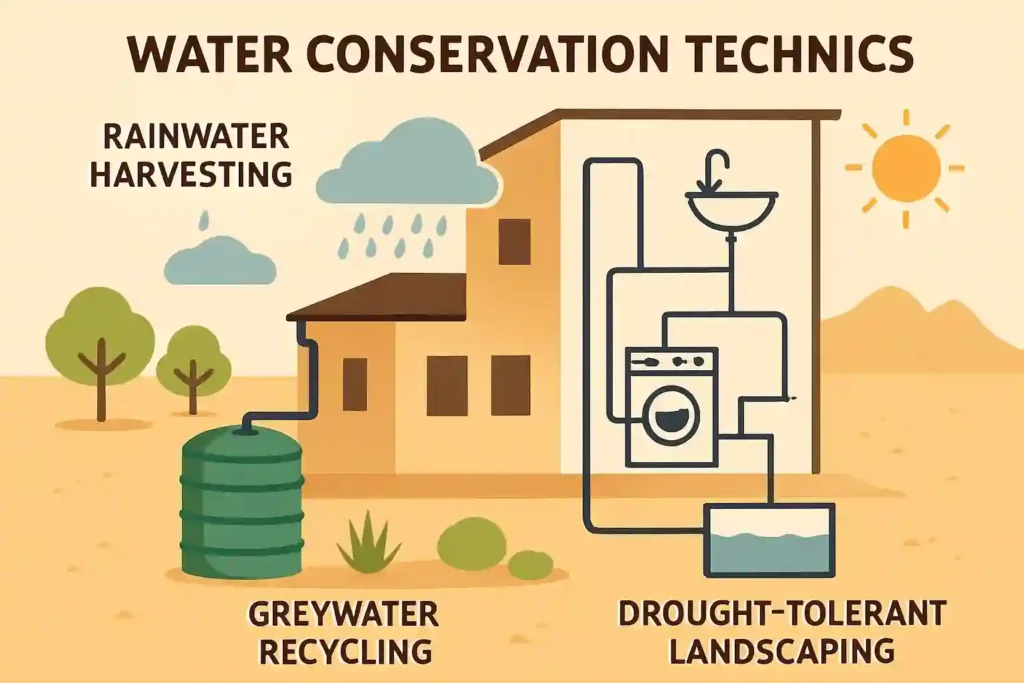
Tracking Mostadam’s adoption rate within KSA will be a key indicator of its success in driving the national green building market. As the system matures and more data becomes available, clearer benchmarks for its specific environmental and economic benefits within the Saudi context will be established.
Comparing the reported savings or performance levels between average LEED projects globally and average Mostadam projects in KSA will offer valuable insights into the effectiveness of tailored regional standards versus global frameworks.
Making the Choice: Which Certification Fits Your Project?
Selecting the appropriate green building certification is a critical strategic decision with long-term implications for a project’s environmental performance, marketability, operational costs, and regulatory compliance.
When comparing LEED and Mostadam, particularly for projects situated within or connected to Saudi Arabia, several key factors must be carefully weighed to determine the best fit. There is no single universally “better” system; the optimal choice depends entirely on the specific context and objectives of the project.
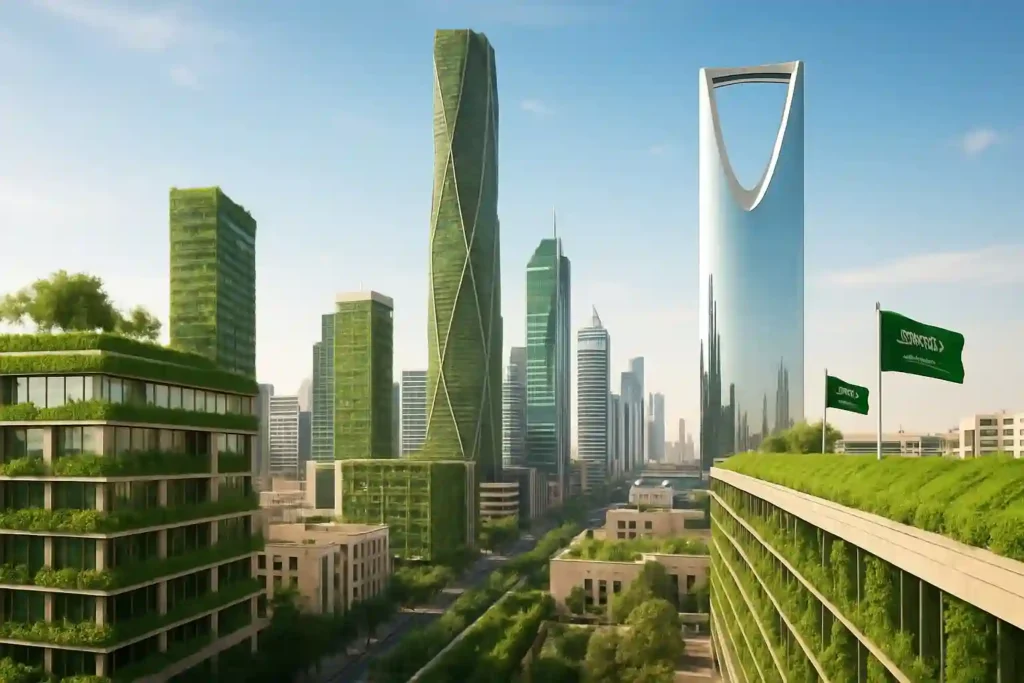
Key factors influencing the decision include the project\’s precise location, its type and scale, the available budget for both implementation and certification, the target market and associated goals (e.g., attracting international tenants versus aligning with national initiatives), and, crucially, the prevailing regulatory requirements.
For projects located outside of Saudi Arabia, LEED is almost invariably the default choice due to its global recognition and Mostadam\’s national focus. However, for developments within KSA, the decision becomes more nuanced.
Scenarios generally favoring LEED, even within KSA, might include projects developed by multinational corporations seeking consistency across their global portfolio, developments targeting international investors or tenants who prioritize a globally recognized benchmark, or projects where specific LEED credits align particularly well with unique design innovations not explicitly covered or weighted heavily in Mostadam.
Furthermore, if a project aims for the highest levels of international prestige associated with LEED Platinum, pursuing LEED might be the primary driver.
The Future of Green Building: LEED v5 and Mostadam’s Evolution
The landscape of sustainable building is constantly evolving, driven by technological advancements, deepening understanding of environmental and social impacts, and increasingly ambitious climate goals. Both LEED and Mostadam are dynamic systems, poised to adapt and respond to these future trends, ensuring their continued relevance in guiding the construction industry towards greater sustainability.
LEED is currently undergoing a significant update with the development of LEED v5. Previewed drafts and communications from USGBC indicate that LEED v5 will place a much stronger emphasis on critical emerging priorities.
Decarbonization is expected to be a central theme, with more stringent requirements and credits focused on reducing both operational carbon (from energy use) and embodied carbon (from materials and construction processes). This aligns with the global push towards net-zero buildings.
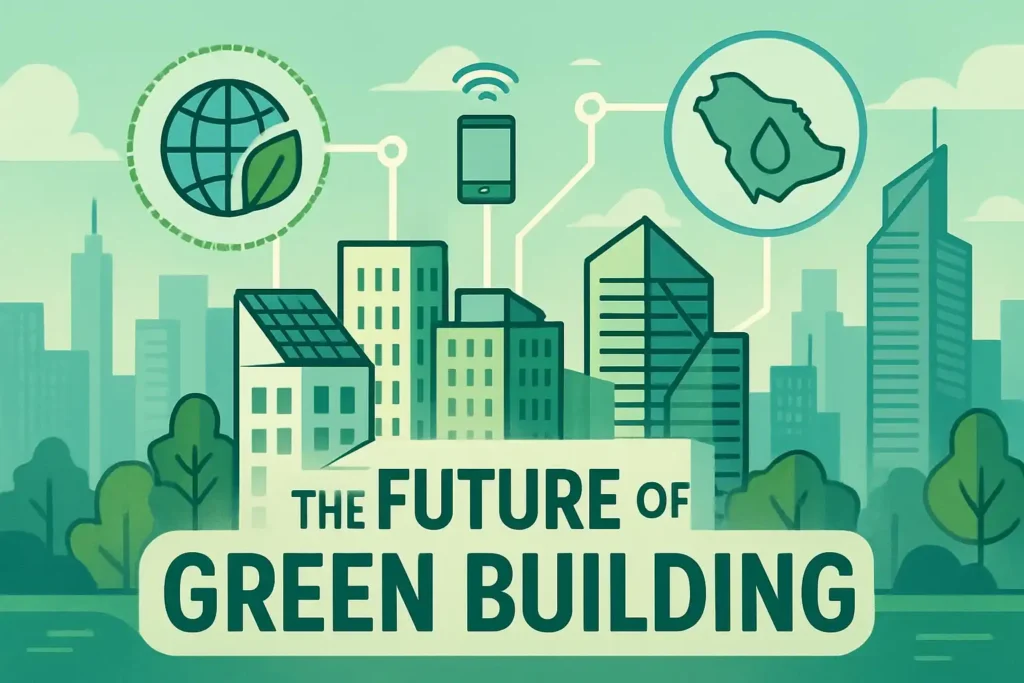
Equity is another major focus, integrating social equity considerations more deeply into the framework, addressing issues like community health, accessibility, and fair labor practices. Resilience is also gaining prominence, with credits likely addressing climate adaptation, disaster preparedness, and the ability of buildings and communities to withstand and recover from environmental stressors.
LEED v5 aims to be more outcome-oriented, potentially incorporating more performance monitoring and data-driven verification to ensure certified buildings deliver on their sustainability promises throughout their lifecycle.
Conclusion:
LEED and Mostadam both play vital roles in advancing sustainable building, offering globally recognized and locally optimized solutions, respectively. LEED provides a comprehensive, international framework, while Mostadam addresses Saudi Arabia’s unique environmental needs and regulations. Rather than choosing one over the other, their combined use can yield the most context-relevant and impactful results. Each system drives accountability, innovation, and stakeholder education. As climate challenges grow, such certification frameworks are crucial. Developers should assess both systems carefully and consult accredited professionals for optimal project alignment.


